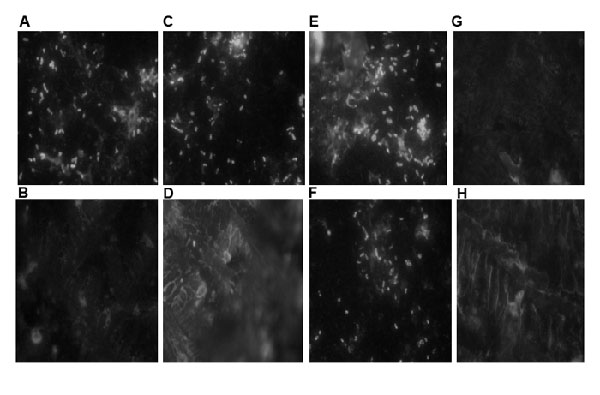Volume 16, Number 5—May 2010
Letter
Body Lice, Yersinia pestis Orientalis, and Black Death
Appendix Figure

Appendix Figure. Immunofluorescent detection (polyclonal antibody, original magnification ×100) of Yersinia pestis in the feces of body lice during cycles 1 and 2. A) Biotype Antiqua–infected lice feces during cycle 1. B) Biotype Antiqua–infected lice feces during cycle 2. C) Biotype Medievalis–infected lice feces during cycle 1. D) Biotype Medievalis–infected lice feces during cycle 2. E) Biotype Orientalis–infected lice feces during cycle 1. F) Biotype Orientalis–infected lice feces during cycle 2. G) Control lice feces during cycle 1. H) Control lice feces during cycle 2.
Page created: December 23, 2010
Page updated: December 23, 2010
Page reviewed: December 23, 2010
The conclusions, findings, and opinions expressed by authors contributing to this journal do not necessarily reflect the official position of the U.S. Department of Health and Human Services, the Public Health Service, the Centers for Disease Control and Prevention, or the authors' affiliated institutions. Use of trade names is for identification only and does not imply endorsement by any of the groups named above.